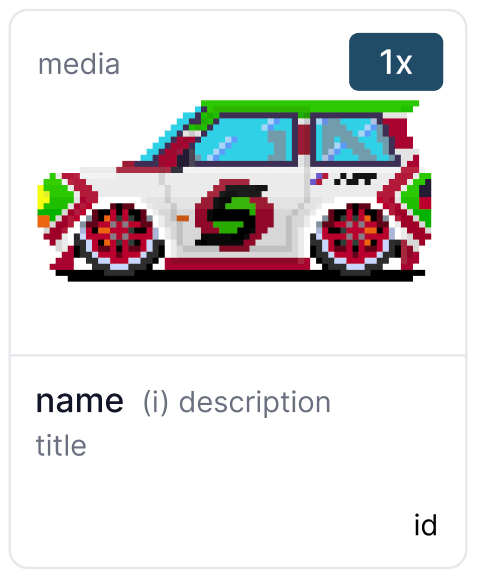Callisto assets list library
This package contains multi chain asset lists with Tokens and NFTs
How to use
Install the package
npm i @callisto-enterprice/assetslistGet Token or NFT asset list for each supported chain, e.g.
import {
CallistAssetChainId,
CallistoNftList,
CallistoTokenList,
getCallistoNFT,
getCallistoToken,
} from '@callisto-enterprise/assetslist'
const mainnetTokens = CallistoTokenList[CallistAssetChainId.Mainnet] // or just 820
const mainnetNFTs = CallistoNftList[CallistAssetChainId.Mainnet]
// Or find any specific asset by address
const nft = getCallistoNFT('0x...', CallistAssetChainId.Mainnet)
const token = getCallistoToken('0x...', CallistAssetChainId.Mainnet)
import {
CallistAssetChainId,
CallistoNftList,
CallistoTokenList,
getCallistoNFT,
getCallistoToken,
} from '@callisto-enterprise/assetslist'
const mainnetTokens = CallistoTokenList[CallistAssetChainId.Mainnet] // or just 820
const mainnetNFTs = CallistoNftList[CallistAssetChainId.Mainnet]
// Or find any specific asset by address
const nft = getCallistoNFT('0x...', CallistAssetChainId.Mainnet)
const token = getCallistoToken('0x...', CallistAssetChainId.Mainnet)
Here is the structure of the Asset interface
export interface CallistoAsset {
address: string
category: AssetType // NATIVE, ERC20, ERC223, ERC721, ERC1155, CALLISTONFT
name: string
symbol: string
image: string // for the NFT it could be a fallback image
audit: {
isAudited: boolean
reportUrl?: string
riskLevel?: string
}
decimals: number
platforms: string[]
projectUrl: string
}
export interface CallistoAsset {
address: string
category: AssetType // NATIVE, ERC20, ERC223, ERC721, ERC1155, CALLISTONFT
name: string
symbol: string
image: string // for the NFT it could be a fallback image
audit: {
isAudited: boolean
reportUrl?: string
riskLevel?: string
}
decimals: number
platforms: string[]
projectUrl: string
}
Here is the structure of the AssetNFT interface which extends the Asset interface
export interface CallistoAssetNFT extends CallistoAsset {
collectionName: string
placeholderName?: string // usually when it is undefined, it is filled by Asset.name
placeholderId?: string // it can be filled by the contract tokenId() during the parsing
placeholderTitle?: string // it can be filled by collectionName during the parsing
placeholderDescription?: string
placeholderMedia?: string // it cann be filled by specific standard, for example for ERC721 is used tokenURI()
}
export interface CallistoAssetNFT extends CallistoAsset {
collectionName: string
placeholderName?: string // usually when it is undefined, it is filled by Asset.name
placeholderId?: string // it can be filled by the contract tokenId() during the parsing
placeholderTitle?: string // it can be filled by collectionName during the parsing
placeholderDescription?: string
placeholderMedia?: string // it cann be filled by specific standard, for example for ERC721 is used tokenURI()
}
The placeholder fields are used for the UI, especially for CallistoNFT standard, since we want to show different data accross different collections We decided to choose placeholder approach when the same UI placeholder can point to different NFT metadata as you can see at the image below
